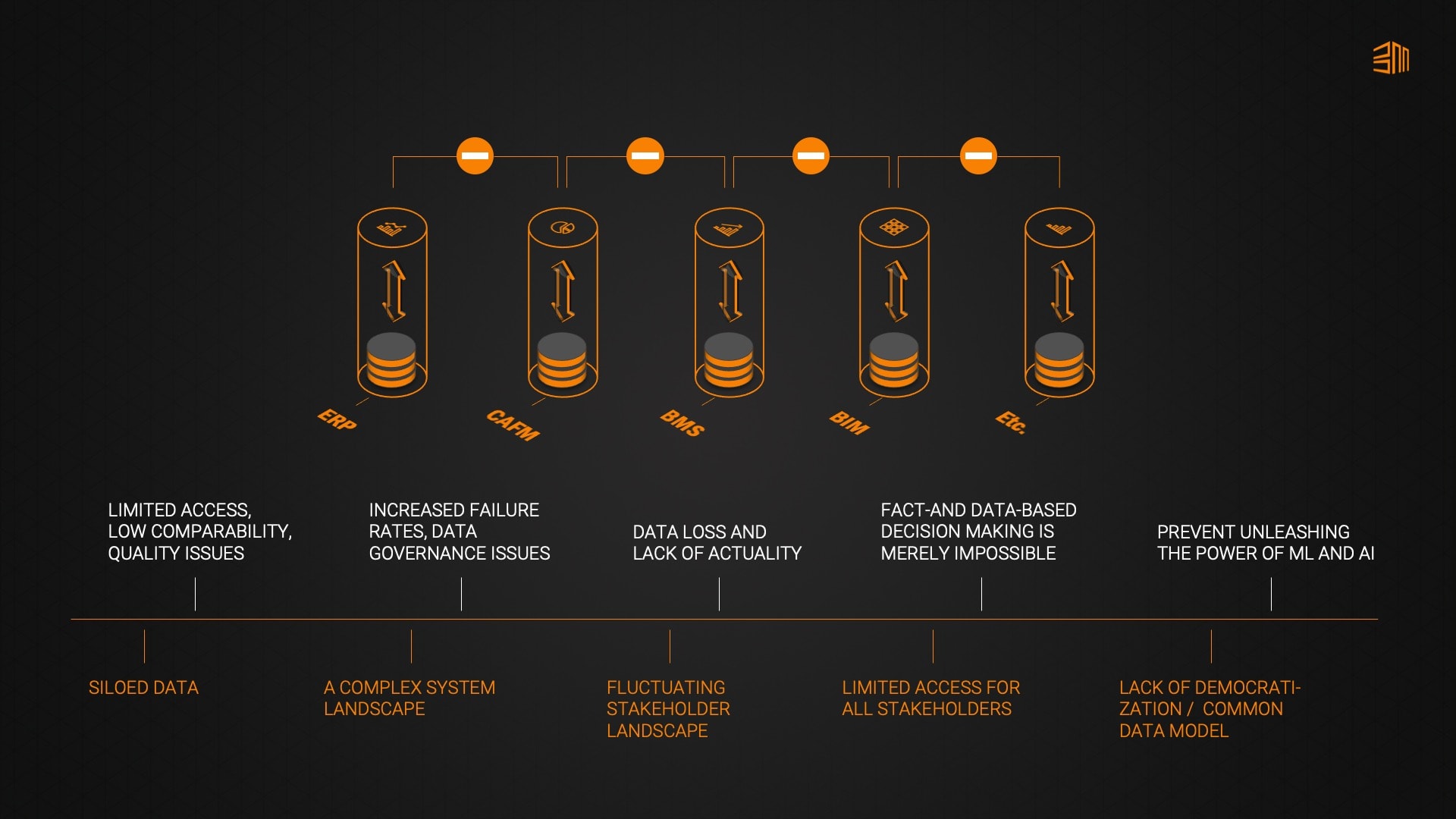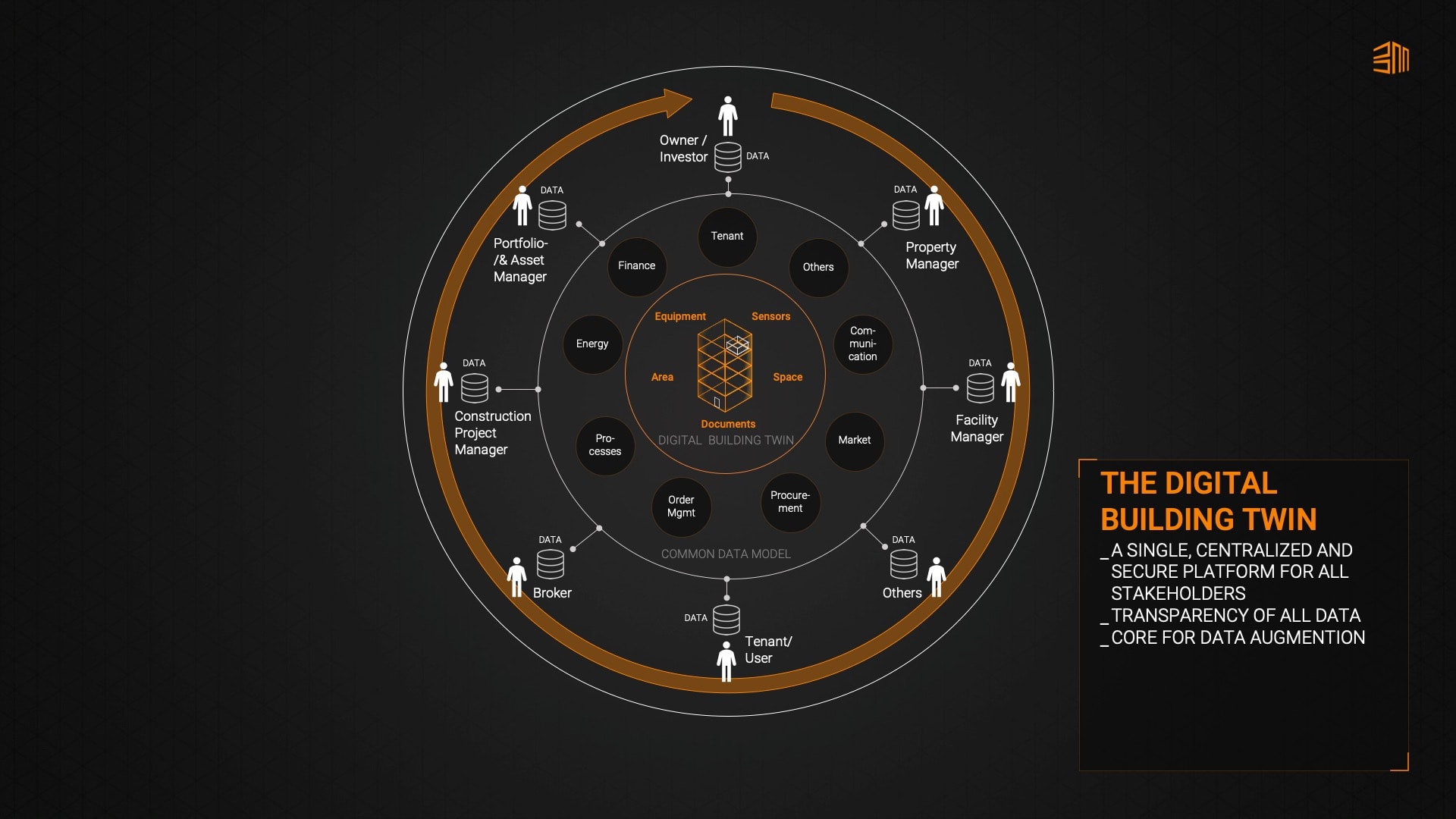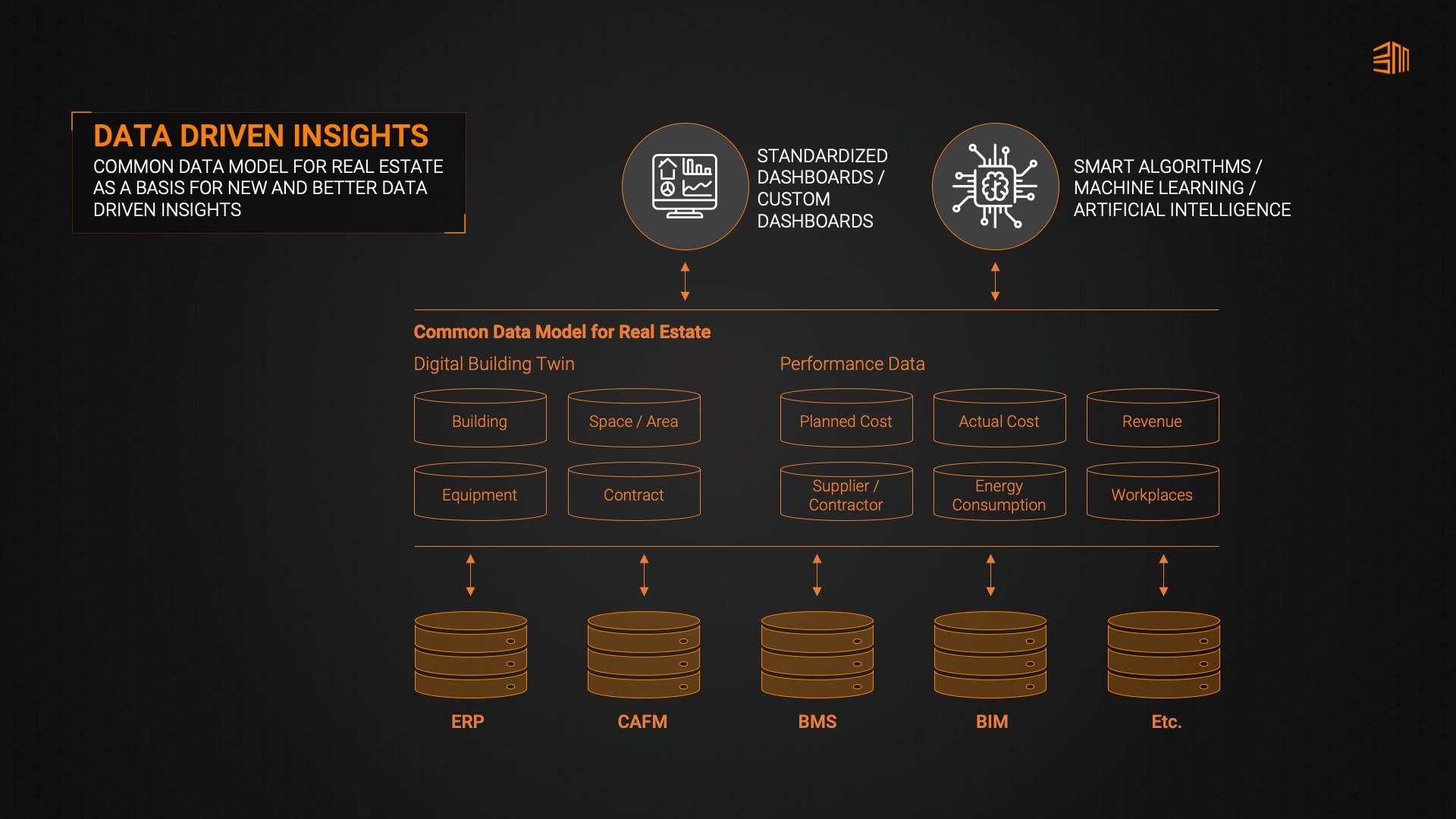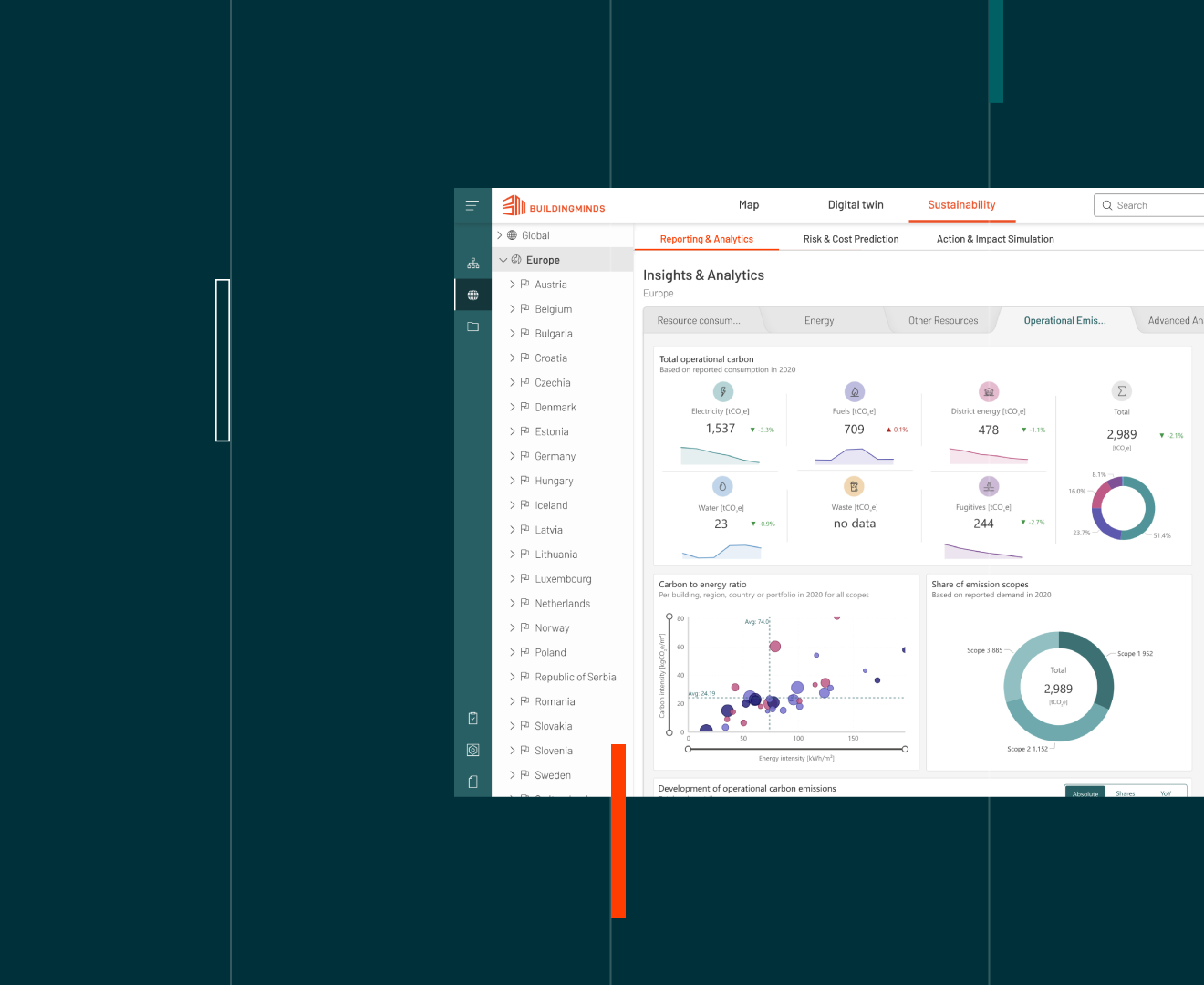Digitalization is the future asset of the real estate industry

Digitalization is not a new concept. Ever since the first programming languages were developed in the first half of the 20th century, humanity has been marching steadily toward a future where nearly everything is digitized.
Real estate industry experts are increasingly aware of the need for effective digitalization, even if they aren’t exactly sure where to start or how to get there. New digital solutions are increasingly deployed to relieve single pain points or to achieve ROI in a specific area. Because of this, companies are now faced with dozens of completely siloed systems and processes that are creating entirely new pain points.
It may be tempting to believe that technology will eventually deliver one system to rule them all and replace the various siloed systems and software at once. It won’t.
The Data is Out of Control

With an almost constant stream of analog and digital data being generated by buildings, the true priority is figuring out how to unleash the power in all of that data to drive strategic performance and get the most out of the building.
A typical managed physical building has many internal and external stakeholders, including owners, tenants, service providers, insurance companies, and more. These stakeholders have important information about that building necessary for its operations and management. The information sits in paper documents in their filing systems and archives, in digital form on someone’s computer hard drive or email inbox, or in any number of digital systems and services.
No matter how technologically delayed or advanced, every business already employs a number of digital tools in their daily work. Most real estate businesses already have digital systems in place, like ERP, CAFM, BMS, or BIM. They are also likely using other software systems for contract management, accounting, capacity planning, and more.
The problem with the way all of this data maintained today is that it is impossible to get a holistic view on all of the information generated by and used to support that single building. Often times, the data is lost entirely. When there is a change in tenant, service provider or building owner, the data is simply gone, requiring a lot of effort and expense to recover or recreate.
Digitalization, done correctly, is the solution to all of these challenges.
Digital Building Twin

To begin bringing order from the chaos, it starts with bringing the physical building into the digital world with a digital twin, or a digital representation of the physical building. A fully mature digital twin can provide a 360-degree view on the individual building and, potentially, the entire portfolio.
It is important to note that a digital twin is only as valuable and secure as the data it contains. Regardless of the number or types of analog and digital tools used to manage buildings today, successful digitalization relies on integrating every part of the building into a holistic, growing and evolving ecosystem.
By integrating all of the various technologies and data structures through a Common Data Model into a digital twin, the struggle to correlate and combine the building data in a meaningful way disappears. Every source of data imported into the digital twin contributes to its ability to act as a single source of truth that delivers the right information to the right stakeholder at the right time.
Buildings continually evolve, as do the assets, processes, and technologies supporting them. So, while there is no finish line when it comes to digitalization and optimization, the starting point is definitely at fusing the physical with the digital through the digital twin.
Single Source of Truth
A significant goal of all of this integration and harmonizing is simply to get to a holistic, single source of truth view for all of the data in and around the building.
There is a huge range of scattered digital solutions available on the market today; each one of them trying to deliver a different value to their customer. At the end of the day, the building’s stakeholders have access to various dashboards and services but still no way to see the big picture because none of these solutions integrates it all. This means they are still manually exporting, importing, and analyzing the information from these different sources in order to get to the information in a useful format.
For example, when a real estate asset is ready to be sold, any number of stakeholders have to manually access records to prepare. Accounting systems have to be consulted for P&L statements; CRM reports are generated for occupancy statuses and history; other digital and analog systems are searched for contracts, compliance verifications, service records, and more. After all of these important details are tracked down, someone must manually compile them into a polished property brief for distribution to investors and portfolio managers. If all of a building’s siloed data is communicating together in a single source of truth, all of this wasted time, labor, and expense is eliminated.
The ideal building management platform should provide a centralized dashboard with meaningful insights and visibility to support the ability for all stakeholder roles within the company to perform their duties and data-based decision making. Role-based dashboard views can be developed to inform not only executives and management but the portfolio manager, the asset manager, the facility manager, and possibly even the occupants as well.
Common Data Model

Once all these streams of data begin flowing into the digital twin, there is an entirely new set of challenges. The second building block to smart building digitalization is the Common Data Model. This concept, used by Microsoft and already applied to other industries like automotive and healthcare, will become the standard definition of real estate data in the industry.
With existing processes, each disconnected silo represents an opportunity for data breakdowns. Manually transferring and mapping of data from the various systems into local tools for rating and benchmarking is an error-prone and inconsistent process. This has been necessary until now, because each system has its own formatting and definitions.
By developing a Common Data Model, the data from each system can be mapped to a standard shared definition, forming a massive “Data Lake”. This will enable the many siloed ITs system and services to exchange data back and forth with consistency and accuracy, thus forming one transparent and efficient digital hub.
Continual Optimization
By applying analytics and machine learning to the data lake in the building management platform, and gathering ongoing collective experiences from industry experts, smart algorithms can be developed and automated to support continual optimization of the building. Over time, these algorithms can be refined and improved to enable the platform to become proactive recommendations for better management of the buildings.Beyond the single building, these smart algorithms can be applied to any or every building in the portfolio anywhere around the world. This allows for consistent application of automated processes and improvement best practices across the portfolio.
Integrating all of the buildings in a portfolio into the building management platform also enables benchmarking. Analyzing the data from the entire portfolio allows for comparison of building performance in terms of financials, resources, efficiencies, tenant satisfaction, subcontractor reaction times, and more.
If the building management platform is built modularly, all of this data can be leveraged to quickly establish new dashboards and react on trending topics. One example of this would be using the data to identify if the status of a building or portfolio qualifies for environmentally responsible certifications, such as Green Bonds certifications.
The true goal of collecting and analyzing the building data is to leverage it to gain insights that achieve the most efficient use of time, money, and resources from single building to entire portfolio.
Digitalization is a Journey
Digitalization is not a final result but a journey of ongoing improvement, from the first data stream connected to a single building’s digital twin to the ability to benchmark and manage an entire global portfolio of smart buildings.
It is not a journey that can be successfully taken alone. Successful buildings digitalization requires co-innovation between the building stakeholders, solution providers with extensive real estate industry knowledge, partnerships with trusted and secure technology providers, and a focus on the long-term goals of the business.



